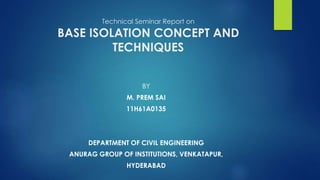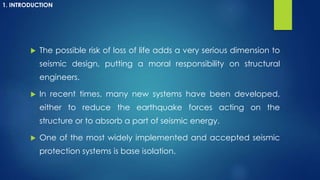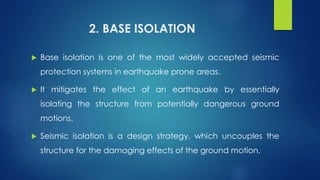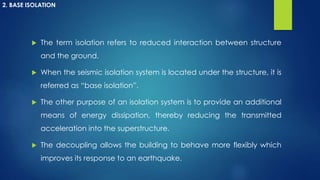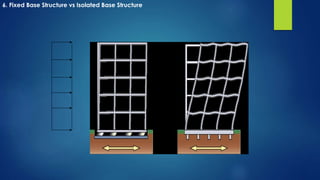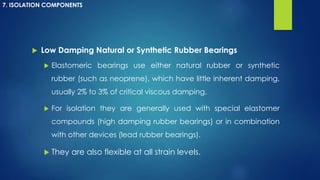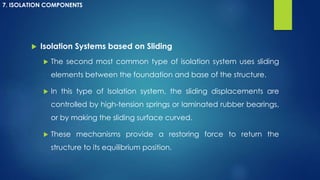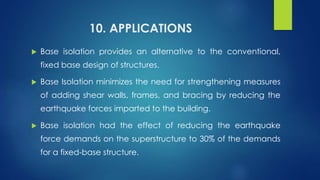The document is a technical seminar report on base isolation concept and techniques in civil engineering, highlighting its importance in earthquake-prone areas. Base isolation mitigates earthquake effects by decoupling structures from ground motion, enhancing safety and structural integrity. The report discusses the principles, components, suitability, and real-world applications of base isolation, emphasizing its effectiveness in minimizing seismic forces on buildings.
